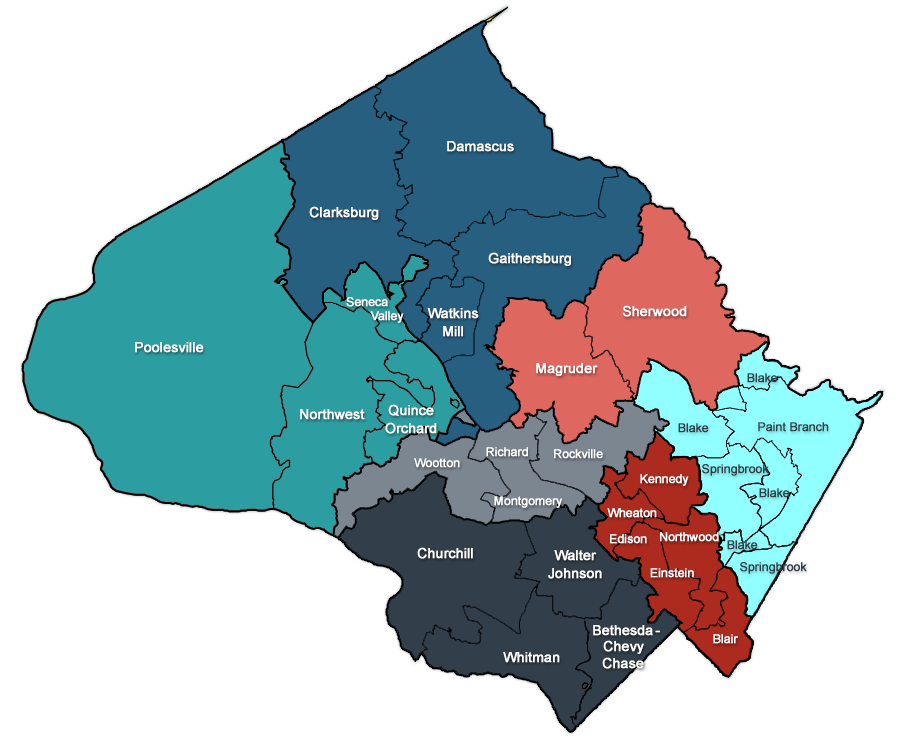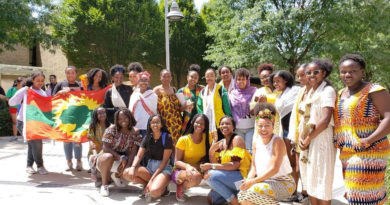The Inherent Issue With SMOB
It’s no secret that MCPS has its handful of flaws but the fact that we have a Student Member of the Board (SMOB) is already a step in the right direction.
But when resources such as a SMOB have only actively fed into the system of inequality, albeit inadvertently, we get stuck.
There’s no way to really tell what most of them said or did during their campaigns, due to the fact that they couldn’t host their campaigns on social media like we can now. Meaning, there’s no way to really tell how effective their candidacy was, no matter the circumstance. So for this piece, we are looking at a few factors: race, gender, and school.

In SMOB, there have been: 13 white men, six white women, 17 men of color, six WOC. Ten have come from “central” schools, 19 from down county schools, five from the NEC, and seven from the rest of the county.
The diversity of our SMOBs is not the issue; it’s the schools they come from.
Only looking at the most popular school areas with 10 and 19. Central schools include: Rockville, RM, and Wootton. Down county schools being: Churchill, WJ, BCC, Whitman. (respectively)
Obviously within MCPS schools there’s a lot of racial disparity–while we are a diverse county, schools themselves aren’t always a reflection of the county as a whole. While these boundary lines have slowly been etched away, MCPS continues to give advantages to whiter schools. Along the way, those schools continue to have resources that others don’t.
And while over time the schools in our county have become more diverse, each school doesn’t reflect the county as a whole.
Looking at the common denominator of schools: Walt Whitman has 65% White students, 4% Black. BCC has 56% White students, 15% Black. And luckily, the majority of SMOBs have come from RM which has the most diverse schools 29% White students, 17% Black (with other races/ethnicities at 24% each.)
So even IF our SMOBs have been racially diverse they are still coming from white majority schools.
But that is purely talking about race. When looking at the other factors, gender specifically the 30 to 12 ratio of men to women is hard to ignore. I’m not here to call MCPS and their students misogynistic, but there has to be some reason only 12 women have only been SMOB.
The existence of a SMOB from schools that traditionally have been represented already narrows how much they can do for others schools, which is no fault of their own. To be clear, I’m not saying having a SMOB from the NEC instantly fixes the underrepresentation issue, but a SMOB from the NEC would know first-hand what it’s like to be overlooked and could better serve the more needy and underrepresented students in MCPS.
In any election we’re forced to trust that the candidates will live up to the promises they make during their campaign. And we tend to put trust in people who have shown promise in the past, people who have already testified and already have shown these qualities and skills previously. But when these opportunities are already given to people who have SMOB in their school bloodline, it makes it seemingly impossible for other schools to gain that experience. Is it justified to vote for the people for more experience if the other(s) don’t have the opportunity to?
And sure you might say “If they really cared about making change, they should find a way.” I used to believe that too. But since then I have learned that it IS hard, too hard. No wonder that underrepresented schools stay unrepresented when they have never seen themselves succeed. They have no reason to believe that they can make change, so when someone feels motivated, it is so much more difficult to find a team of people who believe and support them. To them, it resorts to a lost cause.
Now, I can scream and shout about these “resources” all I want but what, in actuality, are they? No, SMOBS from these schools don’t have a lightened workload or more leniency with the due dates. Students are still held to the same standard as always, no matter the school.
What it comes down to is (shocker) money. The students who go to the aforementioned schools, typically have the familial or personal funding to buy campaign materials, or gas to testify/visit schools, buy professional clothing, etc…
Socioeconomic status is just one factor, the more prevalent one being school advocacy and culture. These candidates would not have access to their opportunities and advocacy if their schools didn’t notify and send them to MCJC (Montgomery County Junior Council) and MASC (Maryland Association of Student Councils) events. In these events they gain access to people who are willing to work with them on their campaign and gain further experience. These events are often offered/shared through MCR (Montgomery County Regional SGA).
Connections also play a factor; it’s not unheard of for politicians to make connections based on where they live and who lives near them…and the same goes for students.
So do we invest in people who have not had that experience but promise that they will, due to the fact that that experience is just as seemingly unattainable as the sought position? Do we continue to vote for the schools that have SMOBs as closely related as the royal family, if it means that we vote for someone with experience, actively feeding into the very idea of inequality we’re trying to change in the county? Is it just as bad to vote for a person because they go to a particular school as it is to vote for someone who doesn’t?
I present a two-part solution: (1)fully understand and explain the importance of SMOB to students early in their education and (2)narrow down candidates with multiple rounds of voting–start big and give less experienced candidates more exposure throughout the process.
If you’re reading this I don’t think I need to explain why having a SMOB is important, at that point I’d be preaching to the choir. It has been so frustrating when discussing who to vote for in this past election and hearing that people A. don’t vote, B. don’t care, and C. vote based on appearance. We should explain to students during classes the importance of voting (and not just the day before the election), whether it be because we can’t vote in other elections due to age or all that SMOBs can do for us. The majority of students just need it spelled out for them. And with this power to vote, they should be able to narrow down the candidates from ten to five to two. It might prolong the campaign season, but it will give so many different people a chance to have their voices heard.
I was fortunate enough to hear about the opportunity for the SMOB nominating convention. Here, our SGA, and a few others (including myself) were able to meet and hear from the 10 top candidates and vote to then narrow them down from 10 to five to two.
The roots of these issues are never ending. It feels as if if you don’t get ahead while you’re 10 years old, you never will. As someone who has understood the importance of SMOB for a while (although not fully investing myself in it), to evolve MCPS into a healthier community not only do we have to look at what needs to be changed but why it hasn’t been to begin with.
We, as voters, have to take responsibility within our voting rights. Blakes percentage of people who voted are drastically lower than the majority of the schools I listed. If Blake students are more likely to vote from someone from the NEC just as BCC is to the upper county, if more BCC people vote than Blake students, it just continues the cycle.
These recent election results, unfortunately, aren’t surprising. I genuinely and seriously don’t doubt Sami (who goes to RM) won’t be a fantastic SMOB. Regardless of who you voted for, I thank you for voting. When the next election rolls around and we’re forced to decide between two candidates I urge you to keep everything in mind and vote for not only who will be best for your school, but for the system in general.




